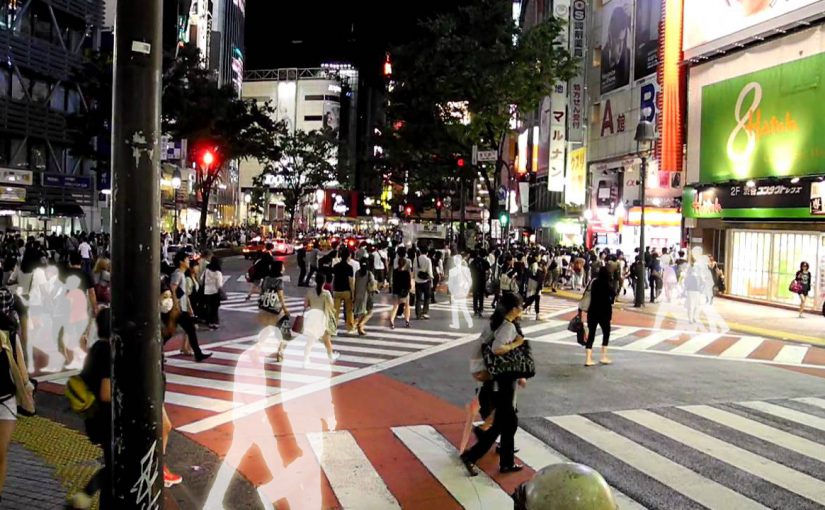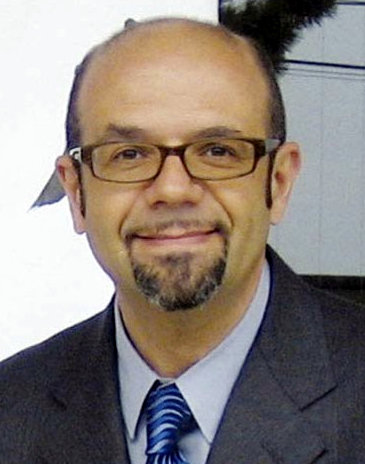
Spiritual World

Some relatives never leave. In Japan, they hang around even after they’ve passed away.
Called “tama” or “tamashii,” spirits of deceased ancestors are considered very real in contemporary Japanese culture — a belief that goes back centuries. According to Fabio Rambelli, a professor of religious studies at UC Santa Barbara, they are part of an invisible realm populated by ghosts, spirits, gods and cult figures that has played a central role in Japanese culture and religion.
Hoping to trace cultural genealogies of these attitudes and produce conceptual maps of this striking aspect of Japanese life, Rambelli organized “Invisible Empire: Spirits and Animism in Contemporary Japan,” an international conference slated for Saturday and Sunday, Feb. 25-26. It is free and open to the public.
“It sounds strange … but ghosts, spirits in Japan are everywhere, or at least people think they are everywhere,” said Rambelli, the International Shinto Foundation Chair in Shinto Studies in UC Santa Barbara’s Department of East Asian Languages and Cultural Studies. “It’s really an important part of the culture. … We think that spirits and ghosts are kind of eerie and dangerous. But for many Japanese, basically the idea is when people die they become invisible and stay around.”
Rambelli believes scholars can better understand this phenomenon by discussing what kind of research is going on in different fields. “I’ve been working on Japan for many years, but this has been kind of strange — always in the back of my mind,” said Rambelli, who specializes in religious theories but noted there is no theology for spirits. “It’s something people kind of make up.”
Today, a lot of the Japanese spiritual lore is spread through video games, films, literature, visual arts, architecture, popular religion, science and technology. It’s so widespread that the study of spirits (yōkai) is now a flourishing academic field and a successful publishing genre; and numerous religious organizations focus their teachings and ritual systems on interactions with and control of ghosts.
Many scholars, especially in the west, tend to explain away this interest in spiritual beings as metaphors for tradition, cultural identity, and social and personal anxiety, according to Rambelli. While this is a viable interpretive key, he added, it ignores the fact that many Japanese people typically treat spirits as potentially real presences. Some don’t subscribe to the existence of these spiritual entities, he continued, but many would be reluctant to simply discard the possibility of their existence.
Carina Roth, a UCSB visiting professor from the University of Geneva and one of the conference speakers, doesn’t dismiss the idea of an invisible realm. “I believe that there are many levels of perception and transmission of information most of us are hardly aware of, and that terms such as ‘ghosts’ or ‘spirits’ are names given to what cannot be fully apprehended with our normal day-to-day baggage or tools,” she said. “Whether they describe actual entities, I have no idea.”
Roth noted the conference topics are not often addressed in an academic environment. “They tend to be considered antithetical to scientific discourse and I am very curious to see how we will all tackle this problem,” she added.
What’s especially surprising about spiritual beliefs being so deeply ingrained in the cultural fabric of Japan, Rambelli noted, is that the country is known for its high degree of secularization, technological advancement and social development. Very few comprehensive studies exist on the metaphysical foundations, theological implications, historical roots, and connections with present cultural formations and concerns.
Asked if he’s ever seen a spirit, Rambelli replied with a laugh: “No. No, that would be really scary. I don’t have the cultural background.”
Other conference participants are: Andrea Castiglioni, a visiting postdoctoral researcher of religious studies; and Ellen Van Goethem, a visiting professor from Kyushu University; Mauro Arrighi, a digital art professor from the Art Academy of Verona; Jason Josephson-Storm, a religion professor from Williams College; Rebecca Suter, a comparative literary studies professor from the University of Sydney; and Jolyon Thomas, a Japanese culture professor from the University of Pennsylvania.
The conference will take place in 2135 Social Sciences and Media Studies Building.



